Antarctica is the southernmost continent on Earth and the fifth largest continent, and it is also the coldest continent on our planet. Interestingly, about 70% of the world’s fresh water is frozen in Antarctica.
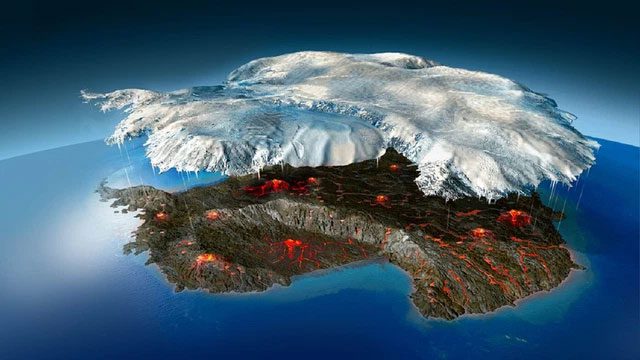
Antarctica is home to the largest volcanic range on Earth.
This is also the location of the largest volcanic range on Earth, which stretches approximately 5,000 km from the South Sandwich Islands near Antarctica to East Antarctica. Scientists have known about the volcanoes beneath Antarctica for a long time, but the exact number of these volcanoes remained a mystery until recently. In 2020, a study by researchers from the University of Edinburgh revealed that there are 138 volcanoes located in West Antarctica, 91 of which were completely unknown before.
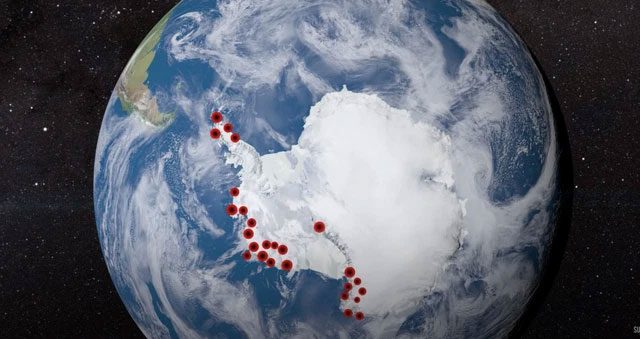
Scientists reveal that there are 138 volcanoes located in West Antarctica.
Of these 138 known volcanoes, only 2 are currently active – Mount Erebus, which is the most active, and Deception Island, which is the exposed summit of an active shield volcano.
Both have erupted in recent years, but they have not caused significant destruction. Furthermore, analyses of rock samples indicate that eruptions have occurred regularly over the past 100,000 years. However, there is no evidence of any truly powerful volcanic eruptions in Antarctica during the recent geological past.
But what would happen if these powerful volcanoes on the continent were to erupt?
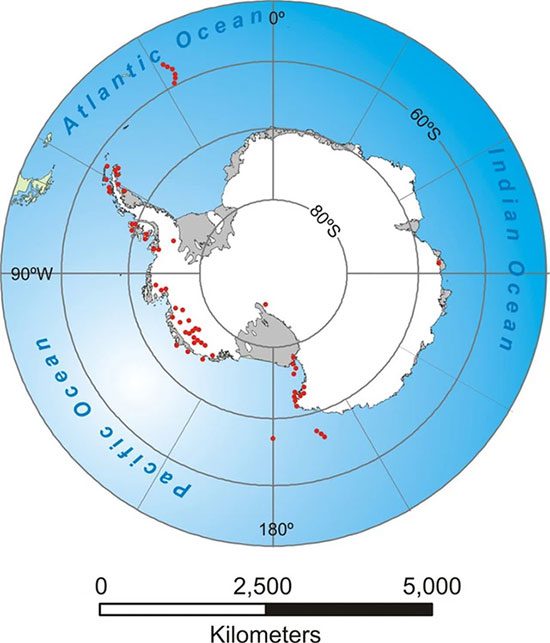
Many other volcanoes are hidden beneath the ice.
In fact, we did not know that there were active volcanoes buried beneath Antarctica until 2013, when scientists accidentally discovered two clusters of small earthquakes. Currently, scientists have scanned Antarctica using ground-penetrating radar and have confirmed that there are many other volcanoes hidden beneath the ice, totaling 138.
Do you know what happens when a volcano erupts? Typically, there are warning signs before an actual eruption begins, such as seismic waves.
Then lava and ash, along with hot gases, will be expelled from the volcano’s mouth. Depending on the situation and the type of lava involved, the flow rate of the lava can vary, but on average, lava moves at a speed of 10 km per hour.
However, when a major eruption occurs, a volcano will release superheated gases and ash. Together, they create what is known as a pyroclastic cloud.
These clouds are extremely hot, reaching up to 700 degrees Celsius, and can move at speeds of 80 km per hour. If you get caught in these clouds, there is only one outcome: death.
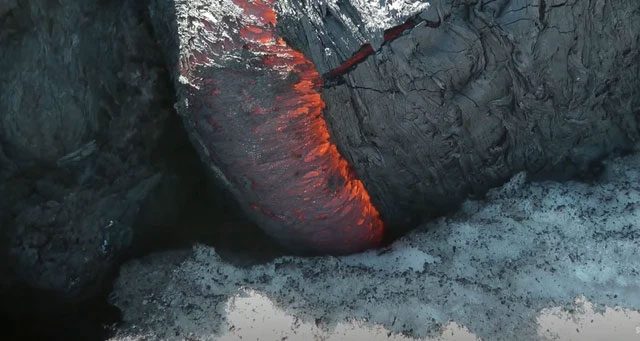
The flow rate of lava varies depending on the type of lava.
But the volcanoes in Antarctica erupting is a different story. They are buried under more than 4 km of ice in many places.
We would not have to deal with volcanic gases moving to the surface—at least not during the time of an eruption. However, the heat released would melt massive caverns, creating significant meltwater. And that is when things start to get worse.
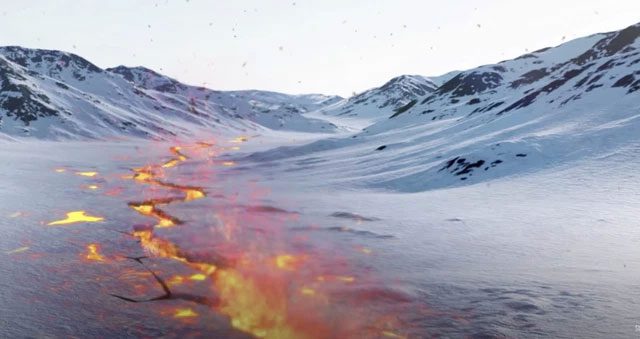
The heat released will melt massive caverns.
The newly created meltwater will cause the ice above it to move faster—the ice in Antarctica will begin to flow into the ocean.
From there, a domino effect will begin. In the case of Antarctica, a truly large volcanic eruption could awaken hundreds of other volcanoes and destabilize the entire region. As these volcanoes continue to erupt in succession, more meltwater will be generated, causing more ice in Antarctica to slide into the ocean.
Consequently, the icebergs of Antarctica will be exposed to warmer ocean currents, revealing the true surface of Antarctica that has been hidden beneath the ice all along. If all the ice in Antarctica were to melt, it would raise global sea levels by about 60 meters.
Rising sea levels could contribute to larger storms moving slower and producing more rainfall, thus devastating the Earth’s surface even more.
Wildlife along coastal areas would lose their habitats, and agricultural land would become saline.
Widespread flooding would push millions of people away from the coast. If eruptions were to occur within a single day, we would witness thousands of deaths and storms sweeping away everything floating on the ocean.
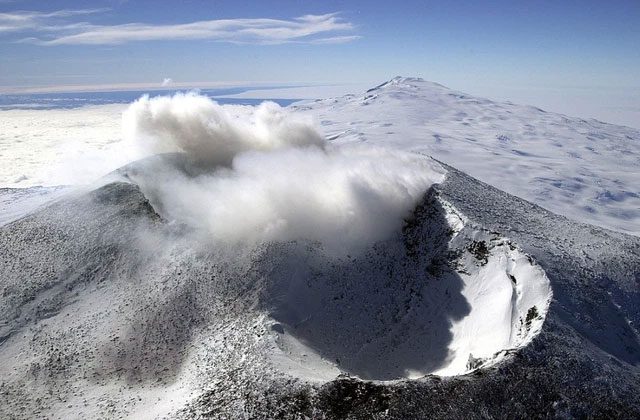
Volcanoes in Antarctica erupting strongly could release more harmful greenhouse gases and deplete the ozone layer.
As for Antarctica, once all the ice has melted, magma will cover the entire continent. The hot magma will solidify in the cold waters of Antarctica, potentially creating more land for the foundation of Antarctica itself. But things don’t end there.
When volcanoes erupt on land, they emit hot gases, including carbon monoxide, methane, carbon dioxide, and nitrogen. Along with this, there are often some water vapor mixed in. According to some estimates, volcanoes are responsible for emitting 645 million tons of CO2 each year.
If the volcanic eruptions in Antarctica become strong enough, they could blow away vast ice sheets, releasing more harmful greenhouse gases and depleting the ozone layer.
However, all of the above is merely a scenario of imagination, as the volcanoes in Antarctica will not erupt simultaneously. And if they do wake up, it would take decades for any harm to occur to humanity.





















































